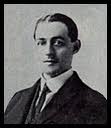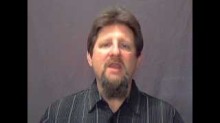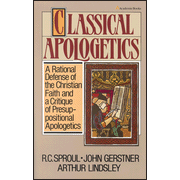Archive
A Reformed Baptist Perspective on Public Theology: The Ministry of Paul, Part II
theroadofgrace and William F. Leonhart III
You can read earlier posts in this series by clicking on the links below:
•The Reformed Confessions (Part I)
•The Reformed Confessions (Part II)
•The Reformed Confessions (Part III)
•Redemption and Creation in Kuyper
•The Incarnate Lord (Part III)
•Introduction to the Book of Acts
•The Ministry of Peter and John in Acts
•The Ministry of Paul in Acts, Part I
___________________________________________________________________
In the previous blog, we began our discussion on the public theology of Paul in Acts by examining the events during Paul’s first and second missionary journeys. We observed how Paul confronted the idolatry present in various Gentile cities from Lystra to Athens. We also observed how Paul’s ministry of preaching not only affected the individual lives of converts, but it also affected social activities within various cities such as Philippi and Ephesus. The last quarter of the book of Acts deals with Paul’s journey from Jerusalem to Rome. Unlike his previous missionary journeys, Paul’s primary audience was not the crowds, but specific rulers themselves. This section gives us particular insight on how Paul interacted with authority and how Paul wisely took advantage of his Roman citizenship.
Paul Before the Roman Tribune and the Council
When Paul arrives in Jerusalem in Acts 21, he is quite aware that he is going to face hostility from the Jewish people. When he enters the temple, he addresses the Jewish crowd in….
Read the entire article here.
A Reformed Baptist Perspective on Public Theology: The Ministry of Paul, Part I
theroadofgrace and William F. Leonhart III
You can read earlier posts in this series by clicking on the links below:
•The Reformed Confessions (Part I)
•The Reformed Confessions (Part II)
•The Reformed Confessions (Part III)
•Redemption and Creation in Kuyper
•The Incarnate Lord (Part III)
•Introduction to the Book of Acts
•The Ministry of Peter and John in Acts
______________________________________________________________
In the previous blog, we examined the public ministry of Peter and John in order to develop an understanding of the public theology presented in Acts. As most readers of this blog know, the primary figure in the narrative of Acts switches from Peter to Paul after Acts 13. In this blog, we will begin our discussion on the public theology of Paul as presented in Acts. In particular, we will focus on four events during Paul’s first and second missionary journeys.
Paul at Lystra
We begin by examining the events surrounding Paul’s first missionary journey with Barnabas. In Acts 14:8-18, Luke records the account of a lame man being healed by the hands of Paul….
Read the entire article here.
A Reformed Baptist Perspective on Public Theology: The Ministry of Peter and John in Acts
theroadofgrace and William F. Leonhart III
You can read earlier posts in this series by clicking on the links below:
•The Reformed Confessions (Part I)
•The Reformed Confessions (Part II)
•The Reformed Confessions (Part III)
•Redemption and Creation in Kuyper
•The Incarnate Lord (Part III)
•Introduction to the Book of Acts
______________________________________________________________
In the previous blog, we provided an introduction to the public theology within the book of Acts by examining the historical setting of Acts and by examining how the content of the apostles’ public teaching produced significant clashes with the pluralistic society of the Roman Empire. In this blog post, we will focus our attention on the public ministry of Peter and John after Pentecost. In Acts 3:1-10, Luke records the account of a lame beggar being healed by the hands of Peter. Like all of the miracles performed by the apostles, this healing was done publicly to verify and authenticate the gospel message which Peter preached in Acts 2. The miracle caused all of those who were present to be utterly astounded and this presented Peter with the opportunity to address the Jewish crowd (3:10-11). With this opportunity, Peter deflects attention away from himself and preaches the gospel (3:11-26).
Peter’s Message to the Nation
For the sake of this blog, it is important to note the content of Peter’s message. First, we note that Peter denies that his own power and piety healed the beggar (v. 12), but rather, Peter draws attention that the God of Abraham, Isaac, and Jacob glorified Jesus through this healing…
Read the entire article here.
A Reformed Baptist Perspective on Public Theology: Introduction to the Book of Acts
theroadofgrace and William F. Leonhart III
You can read earlier posts in this series by clicking on the links below:
•The Reformed Confessions (Part I)
•The Reformed Confessions (Part II)
•The Reformed Confessions (Part III)
•Redemption and Creation in Kuyper
•The Incarnate Lord (Part III)
After examining the continuities and discontinuities associated with the incarnation of our Lord, we will now further ground our discussions on public theology by examining the behavior of the apostles in the book of Acts.
In Luke’s first book (i.e. the Gospel of Luke), Luke reported “all that Jesus began to do and teach” (cf. Luke 1:1); therefore, the implication is that Luke’s second book (i.e. the Acts of the Apostles) will carry the narrative forward, showing what Jesus continued to do and teach after His ascension to heaven. He continues to act through the presence of His Holy Spirit and through the ministry of His apostles (cf. Acts 1:2). This means that the book of Acts is a retelling of the continuation of redemptive history, in which the ministry of the apostles was done openly (cf. Acts 26:26).
Background: Roman Empire and Christianity
Because of the expanse of the Roman Empire, the Roman Empire became a very pluralistic society in which numerous religions existed alongside each other peaceably. During the apostolic period, the non-Roman religions were divided into religio licita (“licensed worship”) and religio illicita (“unlicensed worship”). However, while this distinction officially existed, the Roman Empire was generally very tolerant to other foreign religions. Generally speaking, any people settling at Rome were permitted the liberty of its own native worship in so far as…..
Read the entire article here.
A Reformed Baptist Perspective on Public Theology – The Incarnate Lord (Part III)
by William F. Leonhart III and theroadofgrace
You can read earlier posts in this series by clicking on the links below:
•The Reformed Confessions (Part I)
•The Reformed Confessions (Part II)
•The Reformed Confessions (Part III)
•Redemption and Creation in Kuyper
Discontinuity
As we continue in our examination of the life and teaching of our incarnate Lord, let us recall the fact that Christ’s primary mission was not that of social change. Rather, His primary goal was that of redeeming His bride (the church). However, given the fact that His bride is a multi-ethnic and multi-national bride, this work of redemption came with some very real implications for public theology because of some very real discontinuities with God’s former dealings with His covenant people.
Christ-centric Worship
The first among these discontinuities was the change of worship from being ethnocentric (for the Jews only) and geocentric (in Zion only) to being Christ-centric. Consider our Lord’s interaction with the woman at the well:
“The woman said to Him, ‘Sir, I perceive that You are a prophet. Our fathers worshiped in this mountain, and you people say that in Jerusalem is the place where men ought to worship.’ Jesus said to her, ‘Woman, believe Me, an hour is coming when neither in this mountain nor in Jerusalem will you worship the Father. You worship what you do not know; we worship what we know, for salvation is from the Jews. But an hour is coming, and now is, when the true worshipers will worship the Father in spirit and truth; for such people the Father seeks to be His worshipers. God is spirit, and those who worship Him must worship in spirit and truth,’” (John 4:19-24; NASB).
In moving the center of worship from a people group or a location, our Lord mobilized the gospel. It was no longer a fixed temple, but was now a movable tabernacle. It was no longer bound up within borders and bloodlines, but now extended into the far reaches of the earth and was made effectual for saving men…
Read the entire article here.
A Reformed Baptist Perspective on Public Theology – The Incarnate Lord (Part II)
by William F. Leonhart III
You can read earlier posts in this series by clicking on the links below:
•The Reformed Confessions (Part I)
•The Reformed Confessions (Part II)
•The Reformed Confessions (Part III)
•Redemption and Creation in Kuyper
Continuity
As we consider the life and teaching of our incarnate Lord, let us keep at the forefront of our minds the fact that Christ’s primary mission was not that of social change. Rather, His primary goal was that of redeeming His bride (the church). However, given the fact that His relationship with His bride is a covenant relationship, this work of redemption came with some very real implications for Covenant Theology.
Whether referring to the saints of the Old or of the New Testament, 17th century Particular Baptists designated them the Church. The radical divide presented in Dispensationalism between ethnic, national Israel and the Church would not only have been absolutely foreign to our Particular Baptist forefathers. It would have been downright abhorrent. Insofar as the saints of the Old Testament period believed on Yahweh alone for their righteous standing before God, they were truly circumcised of the heart.
Read the entire article here.
A Reformed Baptist Perspective on Public Theology – The Incarnate Lord (Part I)
by William F. Leonhart III
I realize it’s been a while since our last post on Public Theology. That’s because it was agreed ahead of time that I’d do this next series and, with two full-time jobs and a young family, anything from me will be slow coming. Enough about me, though. You can read the last post in this series here, or just pick up in your reading below. Enjoy.
Introduction
In the last two posts in our series on public theology, we examined the approaches to public theology employed by two notable prophets: John the Baptist and Amos. There are many approaches to the relationship between the Old Testament and the New Testament. Some argue for more radical discontinuity between the two epochs than others. Regardless of what approach we take to entering this discussion, Reformed Baptists must not deny the the existence of discontinuity between them.
For instance, Reformed Baptists overwhelmingly affirm the cessation of the theocratic relationship between God and the ethnic, geographically-identified nation of Israel (see The Baptist Confession, 19.4). With the cessation of this relationship, Gentiles were grafted into the covenant community of God and men ceased worshipping God “on this mountain or that mountain,” worshipping Him instead in truth and in spirit (John 4:19-24). This was certainly a massive shift. God’s people went from a covenant nation comprised of both believers and unbelievers primarily of one particular ethnicity and nationality to covenant communities (churches) comprised only of believers (a credocovenant relationship) from all ethnic groups and nations. The question is whether this shift simultaneously represented a shift in approach to public theology. Certainly, it must have.
Read the entire article here.
A Reformed Baptist Perspective on Public Theology – The Prophet Amos
theroadofgrace
In the last blog, we examined the public theology of John the Baptist who was the last Old Testament prophet. A question that we asked concerning our discussion was: Did John the Baptist operate according to the principles outlined for us in these days? In other words, are John the Baptist’s actions in the gospel accounts normative for the Church? In our article, we argued that there was much that we, as the Church, can learn from John the Baptist’s interaction with the religious leaders and the Roman leaders of his day. In this blog, we are going to examine another Old Testament prophet who dealt with numerous matters of social injustice in his time – the prophet Amos. This blog will primarily answer three questions: (1) How did Amos respond to the culture in his day? (2) Is his response to the culture normative to the church?
A Word of Caution
We must first start this discussion with a statement of caution. With regards to Amos, we must keep in mind that Amos is writing in a time when Israel was still supposed to function as a theocracy within its borders, both geographical and ethnic. In other words, Israel was….
Read the entire article here.
A Reformed Baptist Perspective on Public Theology – John the Baptist
By William F. Leonhart III
Read the first eight posts here, here, here, here, here, here, here, and here.
It’s been a long road to get here, but now we move into the section of our discussion of Public Theology where we observe pertinent biblical texts. There are several places in Scripture where one might start but, for our purposes, an examination of the life of John the Baptist will help us to understand some of the more important questions to ask as we proceed. The first glimpse that we see of John’s approach to Public Theology can be found in his interactions with those who came to him for baptism.
“So he began saying to the crowds who were going out to be baptized by him, ‘You brood of vipers, who warned you to flee from the wrath to come? Therefore bear fruits in keeping with repentance, and do not begin to say to yourselves, ‘We have Abraham for our father,’ for I say to you that from these stones God is able to raise up children to Abraham. ‘Indeed the axe is already laid at the root of the trees; so every tree that does not bear good fruit is cut down and thrown into the fire.’ And the crowds were questioning him, saying, ‘Then what shall we do?’ And he would answer and say to them, ‘The man who has two tunics is to share with him who has none; and he who has food is to do likewise.’ And some tax collectors also came to be baptized, and they said to him, ‘Teacher, what shall we do?’ And he said to them, ‘Collect no more than what you have been ordered to.’ Some soldiers were questioning him, saying, “And what about us, what shall we do?” And he said to them, ‘Do not take money from anyone by force, or accuse anyone falsely, and be content with your wages.’” (Luke 3:7-14; NASB).
Read the entire article here.
A Reformed Baptist Perspective on Public Theology – Redemption and Creation in Kuyper
theroadofgrace
Read the first seven posts here, here, here, here, here, here,and here.
In our last blog post, we presented some of the core beliefs regarding Abraham Kuyper’s public theology, which can be summed up in one sentence: Jesus Christ is Lord of all, and because of that fact, our allegiance to Him should shape not only the private but also the public aspects of our lives. In Kuyper’s vision, Christ is not just the Lord over ecclesiastical matters, but He is also Lord over public matters like art, science, business, politics, economics, and education. Based on this core conviction, Kuyper served as prime minister of the Netherlands, founded a Christian university, started a newspaper, and wrote influential books on theology, politics, and other topics. In recent years a new generation of Calvinists has further developed Kuyper’s original vision of Christ’s lordship over all matters. To understand these recent developments, we must understand neo-Kuyperian theology concerning the relationship between redemptive grace and creation.
Creation and Redemption
In the neo-Kuyperian theological vision, redemptive grace both renews and restores nature. In this vision, God covenanted creation (“nature”) into existence and ordered it by means of His word. At creation, God instructed his image bearers to be fruitful and multiply (interpreted as a social command), till the soil (interpreted as a cultural command), and have dominion (interpreted as a regal command). His image bearers would glorify him by multiplying worshipers, bringing out the hidden potentials of creation, and lovingly managing his world. However, Adam and Eve were seduced by the word that the serpent spoke against God’s……
Read the entire article here.












Recent Comments